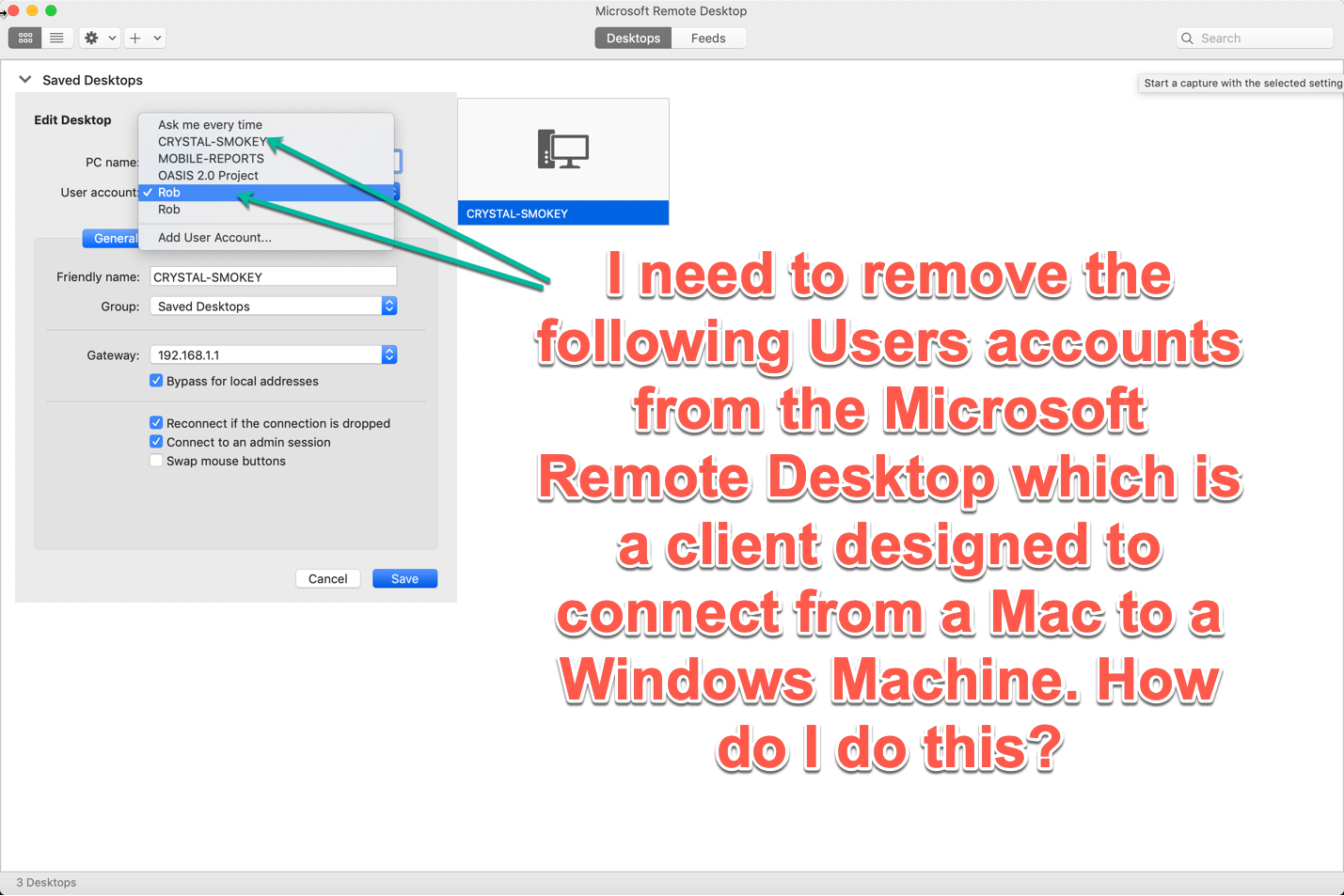

User name – The user name you'll use to access the remote PC.You can also append port information to the PC name (for example, MyDesktop:3389 or 10.0.0.1:3389). The PC name can be a Windows computer name, an Internet domain name, or an IP address. In the Connection Center, tap +, then tap Add PC.Set up your PC to accept remote connections.Īfter you've downloaded the client and configured your PC to accept remote connections, it's time to actually add a PC.Download the Microsoft Remote Desktop client from the iOS App Store or iTunes.Download the Remote Desktop client from the iOS storeįirst you'll need to download the client and configure your PC to connect to remote resources. This section will tell you how to download and set up the Remote Desktop client for iOS.

Get the Remote Desktop client and start using it The iOS client supports devices running iOS 6.x and newer.Curious about the new releases for the iOS client? Check out What's new for Remote Desktop on iOS?.Microsoft Teams Mac performance improvements promised M1 app unclear.Microsoft updates Visual Studio Code with native support for Apple Silicon Macs.There’s also an iOS version available that works with iPhone and iPad. Users can download Microsoft Remote Desktop for free on the Mac App Store. Addressed an issue where windows from remoted Office apps were not visible despite being present in the app switcher.


Added client-side IME support when using Unicode keyboard mode.Added native support for Apple Silicon.We’ve also added some new features and addressed bugs and crashes that were showing up in error reporting. In this release we’ve made some significant updates to the shared underlying code that powers the Remote Desktop experience across all our clients. You can check out all the changes in the release notes below: In addition, version 10.6 of Microsoft Remote Desktop for macOS also adds support for client-side IME when using Unicode keyboard mode, integrated Kerberos support in the CredSSP, and improved compatibility with macOS Big Sur. With native support for the Apple Silicon platform and the M1 chip, the app runs with better performance and more energy efficiency, which means that it should consume less battery power when running on a MacBook. The latest update brought native support for the M1 chip, as well as some new features. Microsoft this week updated its Remote Desktop client for macOS, which allows users to access their computer through another device remotely.


 0 kommentar(er)
0 kommentar(er)
